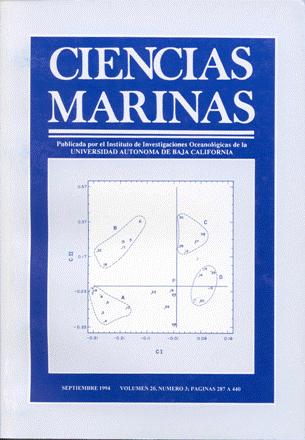Efficiency of epibenthic Renfro beam nets for sampling penaeid shrimp
Main Article Content
Abstract
The efficiency of a Renfro beam trawl net was tested in vegetated and nonvegetated habitats of Términos Lagoon, Mexico. The white shrimp, Penaeus setiferus (87%), predominated over the brown shrimp. Penaeus uztecus (13%), in the naked substrate (Palizada Vieja), whereas the pink shrimp, Penaeus duorarum (98%), was the most abundant penaeid shrimp in the habitat with vegetation (Pájaros Island). In the substrate covered by vegetation, only the brown shrimp (2%) was present in addition to pink shrimp. Estimated penaeid shrimp density through the first sample ranged from 1.2 and 1.3 org. rn–2 in Palizada Vieja to 1.8 org. rn–2 at Pájaros Island. The efficiency of the beam trawl net was estimated at 28% in naked substrate when trawlings were done countercurrent. Net efficiency decreased to 17% when trawlings were done along the water flow. Net efficiency on vegetated substrates was estimated at 15%. Size composition of the first tow was significantly different (Χ2, P = 0.05) from the total size distribution of penaeids present in the area enclosed in both substrates, although mean sizes were similar. However, the size distribution obtained with two replicates did not show significant differences in both substrates at the same probability level.
Downloads
Article Details
This is an open access article distributed under a Creative Commons Attribution 4.0 License, which allows you to share and adapt the work, as long as you give appropriate credit to the original author(s) and the source, provide a link to the Creative Commons license, and indicate if changes were made. Figures, tables and other elements in the article are included in the article’s CC BY 4.0 license, unless otherwise indicated. The journal title is protected by copyrights and not subject to this license. Full license deed can be viewed here.

